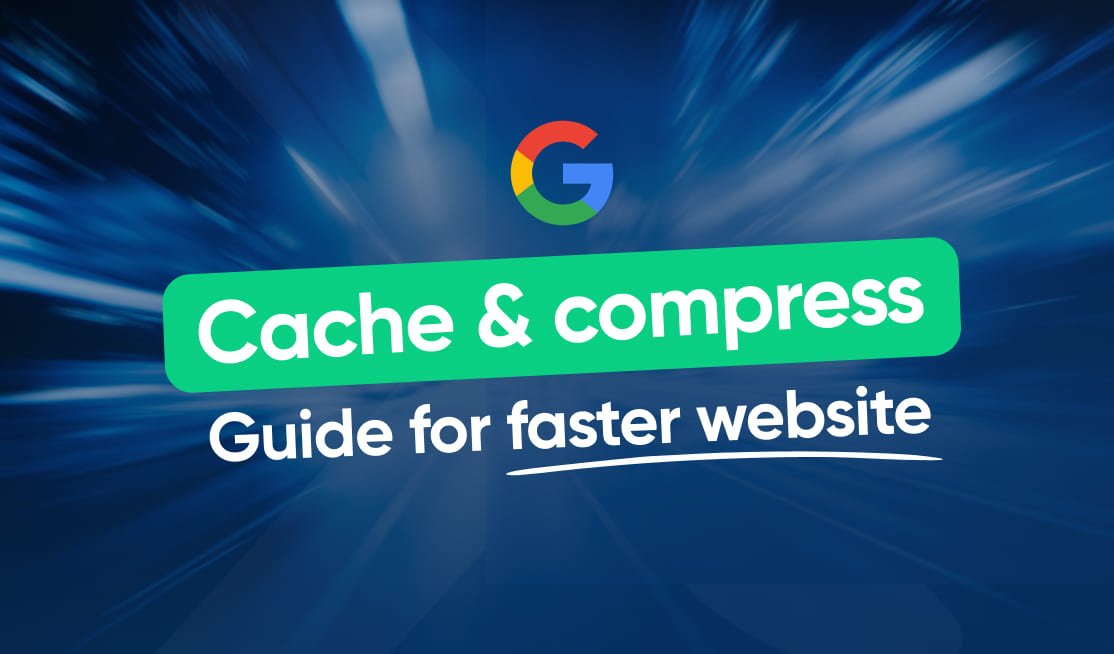
In today’s fast-paced digital age, website speed is paramount for providing an optimal user experience. Slow loading times can lead to frustrated visitors and increased bounce rates, ultimately impacting conversions and revenue. One effective way to enhance website performance is through the strategic use of caching and compression techniques. By understanding the basics of caching and delving into compression methods, web developers and administrators can implement these solutions to improve site speed and ultimately deliver a seamless browsing experience.
Understanding the Basics of Caching
When it comes to website optimization, understanding caching is essential. So, what exactly is caching? Caching is the process of storing frequently accessed data in a temporary memory location, making it easily retrievable whenever requested. By saving a copy of static website elements like images, stylesheets, and scripts, caching eliminates the need to fetch these resources from the server each time a user visits a page. This, in turn, significantly reduces loading times and minimizes server workload.
The role of caching in website speed cannot be overstated. By leveraging caching mechanisms, web developers can improve overall performance and reduce the strain on server resources. When a user requests a page, the cached content is swiftly delivered, eliminating the need for the server to generate the page from scratch. This results in faster load times, especially for returning visitors.
There are different types of caching techniques available. One commonly used method is browser caching, where the web browser stores website files locally after the user visits the site for the first time. This allows subsequent page loads to be served from the user’s local cache, minimizing the need for network requests. Content delivery network (CDN) caching is another popular approach that involves distributing cached website content across a network of servers located in various geographical regions. The CDN serves the cached content to users based on their proximity to the closest server, further reducing latency and improving website performance.
Now, let’s dive deeper into the world of caching and explore some additional caching techniques that can enhance website performance even further.
One such technique is database caching. In dynamic websites, where content is generated from a database, caching can be used to store frequently accessed database queries and their results. By caching these queries, the website can avoid the overhead of executing the same query multiple times, resulting in faster page load times. This is particularly useful for websites with heavy database usage, such as e-commerce platforms or content management systems.
Another interesting caching technique is object caching. Object caching involves storing the results of complex computations or data processing in memory, making them readily available for future requests. This can be especially beneficial for websites that perform resource-intensive calculations or generate complex data structures. By caching these objects, the website can save valuable processing time and improve overall responsiveness.
As you can see, caching is a powerful tool in the world of website optimization. By implementing various caching techniques, web developers can significantly improve performance, reduce server load, and enhance the overall user experience. Whether it’s browser caching, CDN caching, database caching, or object caching, each technique plays a crucial role in making websites faster and more efficient.
Delving into Compression Techniques
In addition to caching, compression plays a crucial role in website speed optimization. Compression refers to the process of reducing the size of files, such as HTML, CSS, JavaScript, and image files, without compromising their quality or functionality. By shrinking the file size, compression allows for faster data transmission over the network and reduces the amount of bandwidth required to load a website.
There are various compression algorithms available, each with its own characteristics and suitability for different file types. Some popular compression algorithms include GZIP, Brotli, and Zstandard. These compression methods employ different techniques to identify and eliminate redundancy in the data, resulting in significant file size reduction. Implementing compression on a website can greatly enhance performance, particularly for users with slower internet connections or limited bandwidth.
GZIP, one of the most widely used compression algorithms, works by finding repeated strings of characters within a file and replacing them with pointers to the original string. This method is highly effective for text-based files like HTML, CSS, and JavaScript. On the other hand, Brotli, a newer compression algorithm developed by Google, focuses on enhancing the compression ratio, especially for text-based content. It achieves this by using a predefined dictionary of common strings and more advanced compression techniques.
Zstandard, another notable compression algorithm, is designed to provide a balance between compression speed and ratio. It is particularly efficient for compressing large files and is commonly used in scenarios where both speed and compression level are important factors. By understanding the characteristics of these different compression algorithms, website developers can choose the most suitable option based on their specific needs and priorities.
Implementing Caching for Your Website
Enabling caching for your website involves a series of steps that can significantly enhance its speed and overall performance. The first step is to ensure that your website is properly configured to take advantage of caching. This can be achieved by setting the appropriate response headers on the server-side to instruct the browser to cache certain resources, such as images, stylesheets, and scripts.
Cache settings can be further customized to specify how long certain resources should be cached and to control how the browser handles cached content expiration. It is important to strike a balance between setting a reasonable caching duration to ensure content freshness and avoiding excessive caching that could lead to stale information being displayed to users. Regularly monitoring cache performance and adjusting settings as needed is crucial for maintaining optimal website speed.
Beyond basic configuration and maintenance, more advanced caching techniques, such as content fragment caching and page caching, can be implemented to maximize performance gains. Content fragment caching involves caching specific portions of a webpage that are more resource-intensive to generate, while page caching stores entire rendered pages. These techniques can greatly reduce dynamic content generation and database queries, resulting in faster page loads for users.
Another crucial aspect of implementing caching for your website is understanding the different types of caching mechanisms available. In addition to browser caching, which stores resources locally on a user’s device, server-side caching can also be utilized to store pre-generated responses and reduce server load. By implementing server-side caching mechanisms such as opcode caching or object caching, you can further optimize your website’s performance.
Furthermore, leveraging a content delivery network (CDN) can significantly enhance caching capabilities by distributing cached content across multiple servers located in various geographic locations. This not only reduces latency for users accessing your website from different regions but also provides additional redundancy and scalability to handle high traffic volumes.
It’s important to note that while caching can greatly improve website speed and performance, it’s essential to consider the implications of caching dynamic content. Ensuring that dynamic elements, such as user-specific information or real-time data, are not cached incorrectly is crucial to prevent displaying outdated or inaccurate content to users.
Applying Compression to Your Website
Once caching is implemented, it’s time to focus on applying compression to further optimize your website. Choosing the right compression method depends on various factors, including the file types used on your site and the level of compression desired. GZIP is a widely supported compression algorithm that is effective for compressing text-based files like HTML, CSS, and JavaScript. Brotli, a more recent addition, offers even better compression ratios and is gaining popularity among modern browsers. Zstandard is another option that provides a good balance between compression speed and efficiency.
Implementing compression on your site typically involves configuring your web server to compress certain file types and sending compressed files to browsers that support it. This can be achieved by modifying server settings or relying on plugins and extensions that handle compression automatically. Regularly testing and evaluating compression effectiveness is important to ensure optimal performance, as different file types and content may yield varying compression results.
When it comes to compression, it’s important to consider the impact on website performance. While compression can significantly reduce file sizes, it does come with a trade-off in terms of server processing power. The more compressed a file is, the more CPU power is required to decompress it on the client side. This means that finding the right balance between compression and decompression efficiency is crucial for achieving optimal website speed.
Furthermore, it’s worth noting that not all file types benefit equally from compression. While text-based files like HTML, CSS, and JavaScript can be compressed effectively, image and video files are already compressed by their nature and may not see significant size reductions. However, it’s still important to enable compression for these file types to ensure consistent performance across all aspects of your website.
In conclusion, caching and compression techniques are valuable tools for improving website speed and delivering a seamless browsing experience. By understanding the basics of caching, delving into compression methods, and implementing these solutions, web developers and administrators can optimize website performance, reduce load times, and enhance user satisfaction. Remember to regularly monitor and adjust caching and compression settings to ensure continued optimal performance and stay ahead in today’s fast-paced digital landscape.


